The PolarTREC Field Experience
A simple Google search changed my life. I always knew I wanted to go to Antarctica, but getting the opportunity to visit the continent as part of a research team was something I never imagined. A year ago, I was looking for a way to become more involved and connected to the research science world. 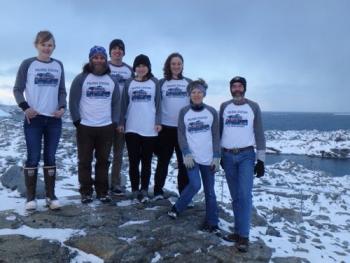
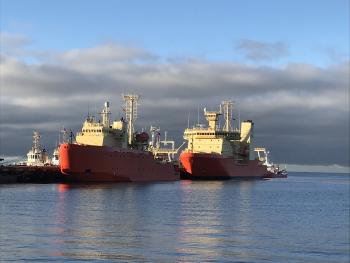
There have been nightmare stories from the crossing of the Drake Passage and just this year, there was a major accident when one of the scientists was thrown from his bunk and broke numerous bones. Luckily, I did not experience anything of that magnitude, although we had a day or two of rough seas on the way back to Punta Arenas. During this expedition, I would spend 24 days on the Western Antarctic Peninsula at Palmer Station, the smallest of the US stations which can hold a maximum of 44 persons, but during my stay was at 90% capacity.
Summary of the Science
The Principle Investigator I worked with was Dr. Chuck Amsler from the University of Alabama at Birmingham and his team of Maggie Amsler, Sabrina Heiser, Michelle Curtis, CJ Brothers and the chemist and diver Andrew Shilling, a Doctoral student from the University of South Florida. 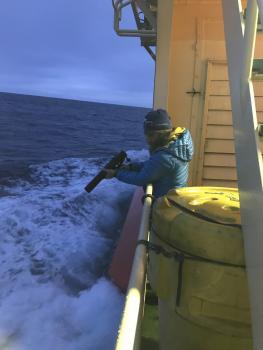
Scuba Diving in Antarctica takes a lot of experience, preparation, and stamina. You need to be completely covered in a dry suit with only a small area of your face exposed. The divers would stay submerged up to 45 minutes at a time and would sometimes complete up to 3 dives in one boating session. My job during this part of the research was a dive tender, I would help the divers get into their gloves and get their tanks on before the entered the water.
While the divers were in the water, we kept a constant lookout for leopard seals and kept the communications center at Palmer aware of the progress of the boating trip. When the divers came up with the seaweed, invertebrates, or experimental substrates the dive tenders would bring the specimens, equipment and tanks onboard the boat. 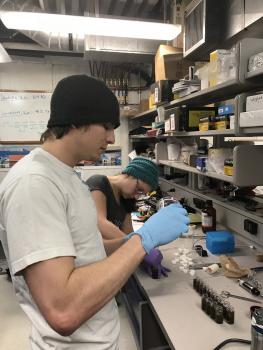
Once chemotypes were isolated, research was conducted through bioassays that consist of using a dried krill or algae based pie mixed with the specific isolated chemical compound from algae or an invertebrate species and testing it against a control pie of krill or algae with only the chemical used to extract the tested compound. Researcher CJ Bothers describes the experiments his way:
“The seafloor along the western Antarctic Peninsula is covered with macroalgae and small invertebrates living on the macroalgae. Most macroalgal species, such as the red alga Plocamium cartilagineum, produce chemical compounds that discourage invertebrate grazing. However, the amphipod, Paradexamine fissicauda, is a “cheater” and can consume P. cartilagineum and sequester the chemicals to protect itself against fish and other predators. Research conducted by the Amsler/Baker/McClintock group has determined that P. cartilagineum produces multiple “chemotypes” or multiple sets of chemical defensive compounds. However, we do not understand why the alga needs to produce multiple chemotypes, and what effects different chemotypes have on amphipods consuming the alga." 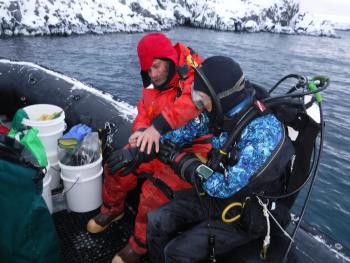
“The purpose of this experiment was to determine how different chemotypes of P. cartilagineum affect the growth and reproduction of the amphipod Paradexamine fissicauda. To answer this question, we held juvenile amphipods in containers for 60 days while being limited to a single food source – either a non-chemically defended macroalga (control group) or one of seven different chemotypes of P. cartilagineum (experimental groups). We measured the length and weight of the amphipods at the beginning of the experiment and after 30 and 60 days. We also conducted the same experiment with adult amphipods, to determine the effects of macroalgal chemical defenses on reproduction. In addition to measuring growth, at the end of the experiment we determined how many adult amphipods were carrying eggs, and the clutch size. These data will help us determine why macroalgae produce a variety of chemical defenses, and what effects these chemical defenses have on amphipods living on the macroalgae.” 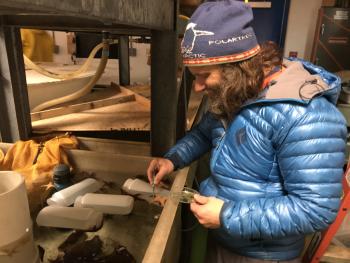
Sabrina’s Heiser’s PhD work entails a lot different aspects of study with Plocamium and the shallow water marine environment, but her work this Antarctic season dealt mainly with trying to discover whether the chemical defenses of the Plocamium are dependent on the location where the red algae is growing. Last year, Sabrina took individual plants with specific chemotypes from one area of the Palmer Station dive area and transplanted them to other areas and depths using concrete blocks as substrate to grow the algae. This year she harvested those Plocamium specimens and will wait for Andrew and the lab at the University of South Florida to isolate the chemotypes. These data will allow Sabrina to determine if location has an influence on the chemotypes produced by the algae.
The Importance of Teacher/Researcher Collaboration
The teacher and researcher have different expertise and approach the knowledge of science from different perspectives. The highest goal of a high school teacher in the classroom is to produce students who are scientifically 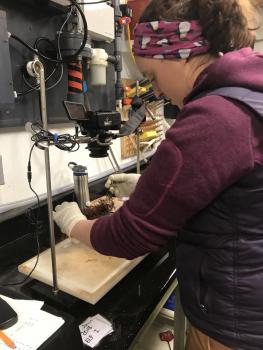
Bringing it All Back Home (Students, Community and Polar Research)
My main hope from this expedition was to improve my knowledge of polar research and to become reacquainted with experimental science. Through this experience I will improve the way I teach and I now have new knowledge of experimental design. 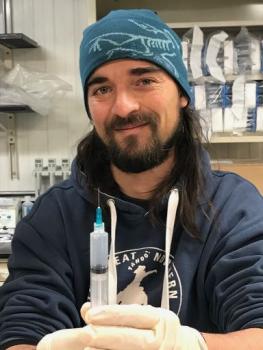
Climate change has a huge impact on the future of these whales. The whales and really most of the food web of Antarctica are dependent on krill and krill is dependent on sea ice which is drastically shrinking due to climate change. Another research team was studying the icefish, a very interesting fish that does not have hemoglobin in its blood. It carries dissolved oxygen in its blood that supplies the organs with the oxygen they need. The icefish carries dissolved oxygen in its blood at 21%, but as ocean temperatures warm they will not be able to carry as much dissolved oxygen and that will impact all their organs especially their eyes.
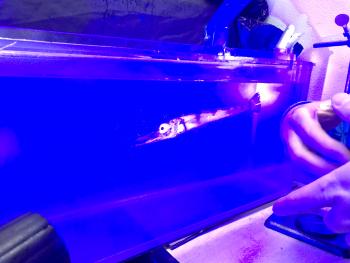
Water temperature also effects the rate at which their eggs develop, speeding it up. Meaning the eggs will hatch at very different times than the needed food supply. In fact the whole shallow water marine environment around Antarctica may be heading towards disaster from a very unlikely source. Benthic king crabs are now amassing on the continental slope of Antarctica. Once confined to the deep ocean where temperatures are actually warmer than the shallows, they were unable to move into waters below -0.4 degrees Celsius. The salt in the oceans allow waters in Antarctica to reach -1.8 degrees Celsius. As global temperatures raise, ocean temperatures will as well, which will allow the king crabs to migrate into the shallow water marine environments. For millions of years the shallow water marine environment around Antarctica has evolved without a skeleton crushing organisms like the king crab, and the native organisms located in this environment do not have any defenses against the king crab. My students from last year, my future students and the community at large have already shown a huge interest in my expedition and I cannot wait to share my experience with all of them.
Community Outreach
One of the most delightfully surprising aspects of my return to North Carolina was all the interest I have received in my expedition. Students, friends, colleagues, acquaintances, and people I don’t even know have approached me to ask questions about my experience or ask if I could do a presentation to their classroom, association, or group. 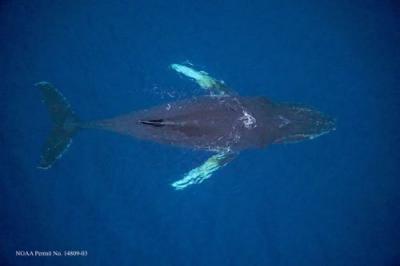
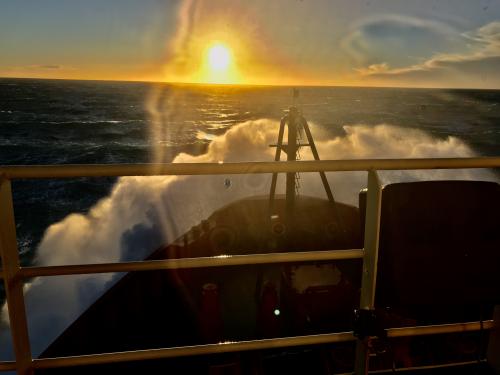
*This program is supported by the National Science Foundation under award 1345146. Any opinions, findings, and conclusions or recommendations expressed by this program are those of the PIs and coordinating team, and do not necessarily reflect the views of the National Science Foundation.
| Attachment | Size |
|---|---|
| Download Report (PDF - 951 KB)950.64 KB | 950.64 KB |
This program is supported by the National Science Foundation. Any opinions, findings, and conclusions or recommendations expressed by this program are those of the PIs and coordinating team, and do not necessarily reflect the views of the National Science Foundation.
